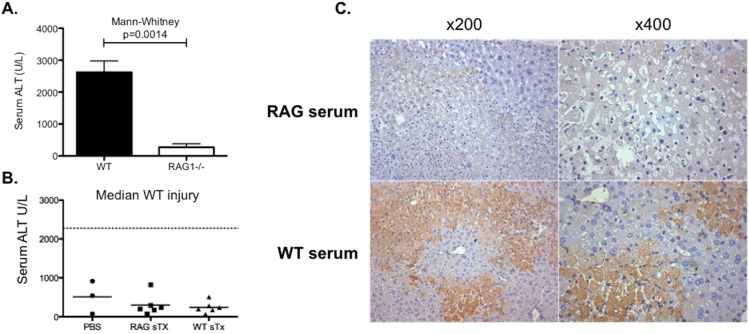Fig 2. The pathogenicity of IgM in IRI.
WT and RAG1-/- (n = 6) mice underwent experimental warm partial hepatic IRI (40 minutes ischemia and 24 hours reperfusion) to elicit the role T cells, B cells and/or IgM play in the pathogenesis of injury. There was significant reduction in the serum biochemical marker of injury (ALT) observed in RAG1-/- mice compared to WT controls (Mann-Whitney p = 0.0014, median + SEM) (A). To assess whether this protection was a result in the deficiency of IgM, RAG1-/- were injected with serum (sTx) from WT (n = 6) or RAG1-/- (n = 6) donors 24 hours prior to IRI. RAG1-/- mice were injected with PBS (n = 3) as an additional control group. Following 40 minutes ischemia and 24 hours reperfusion, there was no reconstitution of injury (median WT injury calculated from n = 32 mice) or significant differences between the groups [Kruskal-Wallis p = 0.66] (B). Successful engraftment of IgM from WT donors was confirmed by the deposition of IgM into areas of injury (C).

